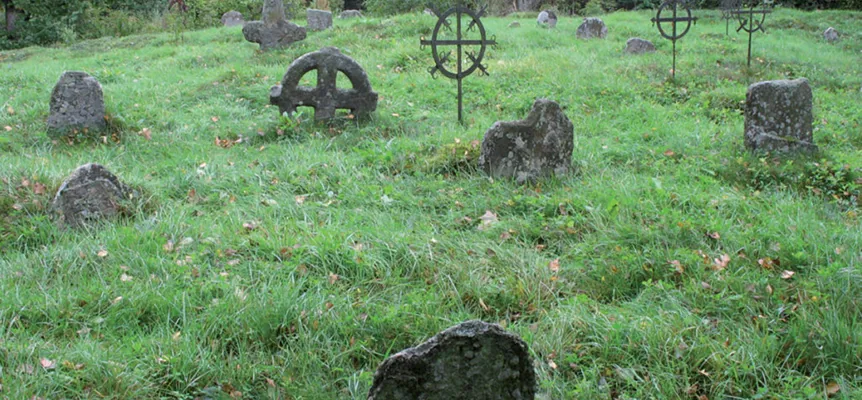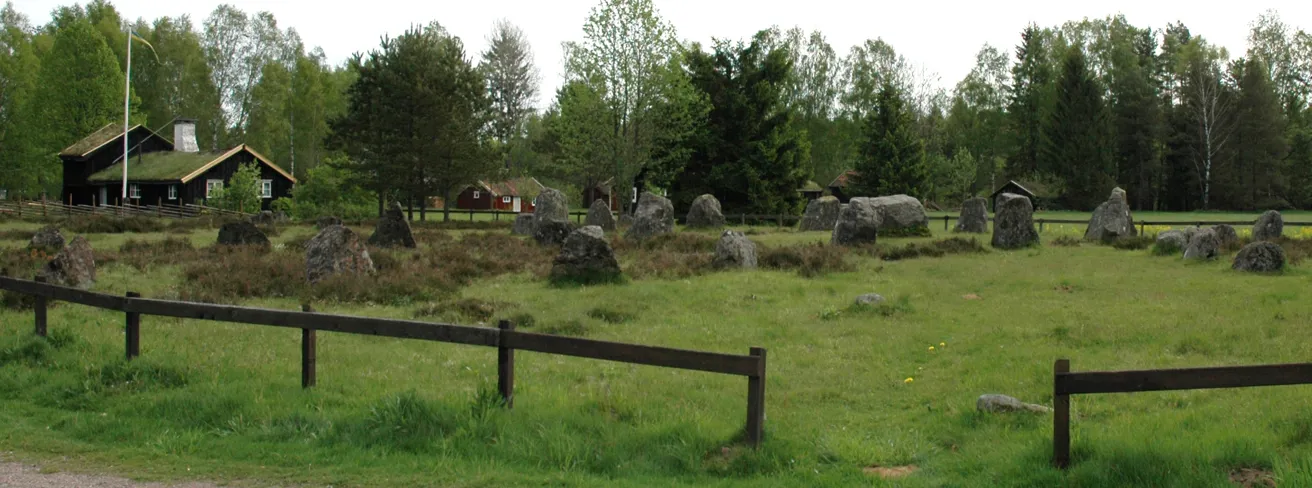
Smålandsstenar to Bolmen
An area where all time periods, from the Neolithic to the Viking Age, are represented
In the past, the southeastern part of our district was called "Finnvedens folkland". Today, this area is classified as of national interest for heritage conservation. The cultural environment is particularly valuable because all periods, from the Neolithic to the Viking Age, are represented in the form of various ancient remains. In Reftele, for example, you can find the mythical rune stone "Brödrastenen" and the old court and execution ground. Within the area there are also 13 villages with very well-preserved buildings from the 19th century. There is much for history buffs to discover. Combine your tour with coffee & cake at the historic "Göstas" café in Smålandsstenar.
Stone circles
The well-known ancient monuments "Smålands stenar" stand in the Villstad local heritage centre. The burial ground dates from the Iron Age and consists of five stone circles and a single stone. The stone circles are between 8 and 20 metres in diameter and are made up of an odd number of large stones.
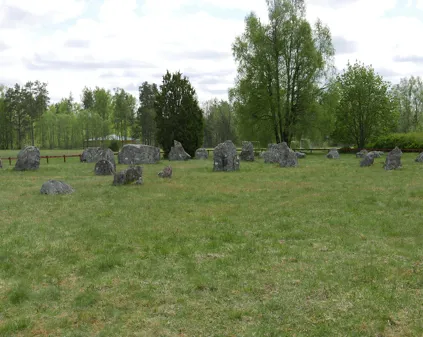
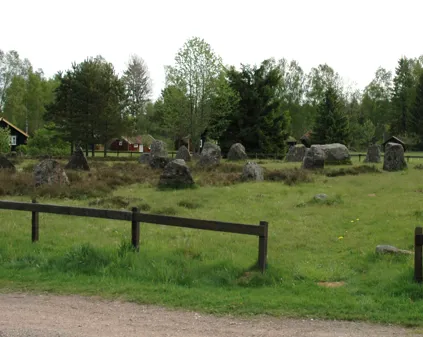
The bridal stones
According to legend, the bridal stones were erected in memory of a bridal party that had been cut down by the Danes. According to another version, a passing bridal train were turned into these stones by an enchantment.
Släthult mill
This is a grist mill dating back to the 17th century. Släthult's mill is first mentioned in literature in 1560. That was when Gustav Vasa had a register of farm production drawn up. It was probably intended that the register would form a basis for taxation. The mill is always open and the milling and sale of flour takes place a few times a year. Tables and chairs are available so feel free to bring a picnic to this beautiful place. Sometimes Villstad local history association serves waffles at the mill.
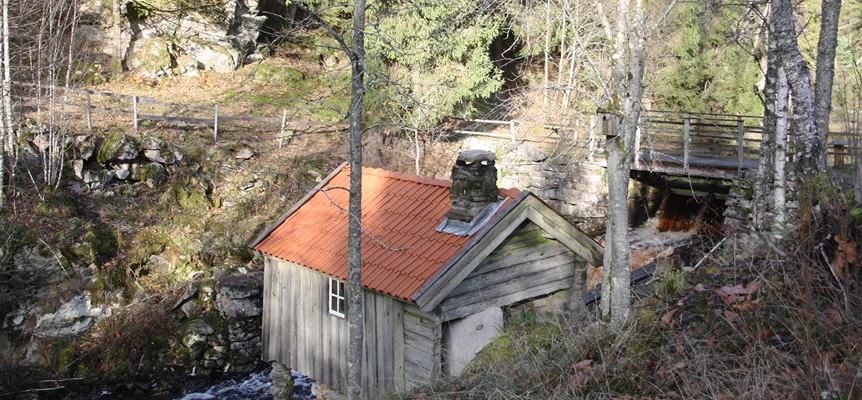
Villstad kyrkby
Villstad kyrkby is a nature conservation area with beautiful nature, historic buildings and ancient monuments. Several interesting buildings from different times can be found in the traditional village. The church, the church stables, the old vicarage and the schoolhouses are all well worth a visit. Outside the village there are burial sites and ancient remains from the Iron Age.
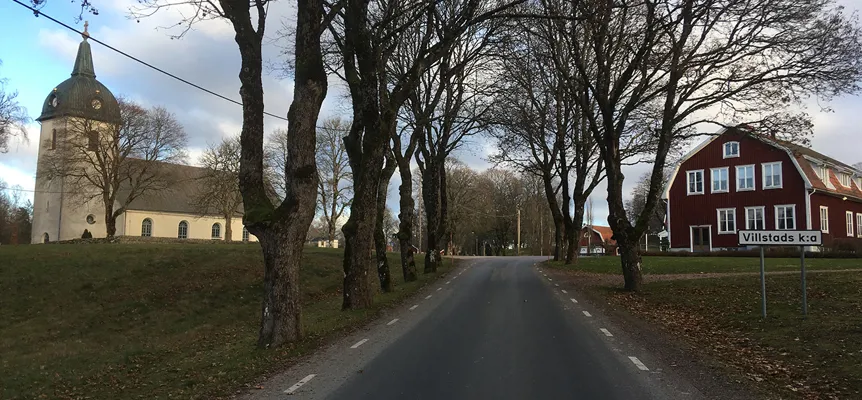
Villstad well
The well was popular for its curative powers until the early 20th century. Together with the well, there were several buildings and a croquet lawn here. Today, only a small well house remains above one of the springs as well as an information board.
Health-giving springs have existed since ancient times. The power from them was considered to be of divine origin and anyone, who believed, could be cured of practically any disease. The story goes that King Karl XI visited the spring and drank its waters.
In earlier times, "drinking from the well" was a ceremony that followed certain patterns. In the 1870s, daily well drinking began at five in the morning. The well clerk would ring his bell and the spa guests would line up at the spring to have their water glasses filled. This ceremony was repeated eight times per day.
Courthouse in Reftele
Reftele and Ölmestad have long histories as courthouses for Västbo Hundred. The courthouse in Reftele was completed in 1903 and is a prominent and well-preserved example of the brick architecture of the time. The courthouse has been listed since 1979
Brödrahalla Runsten
In a birch pasture is Brödrahalla, which has been designated as Västbo Hundred's old courthouse. The site contains several upright stones from different eras, including a rune stone from the 900s or 1000s. The burial ground where it stood became a gravel pit in the 19th century, the stone was damaged and disappeared and was rediscovered in the early 20th century. It was originally erected together with another stone, and legend tells of two brothers, for whom it was foretold that they would slay each other. They moved far apart, but fate caught up with them and they killed each other right here. Presumably, Brödrahalla got its name from these brothers.
Kållerstad deserted cemetery
In Kållerstad there are two church sites. The present church, dating from 1858, stands in the northern part of the village. About 600 metres south of this and on the crest of a ridge was the former church. All that remains is the old deserted cemetery. The oldest known church here was an early medieval stave church in the shape of a cross. The church was a sacrificial church and therefore received gifts to a particularly high degree. Today, the cemetery has meadow characteristics, which most cemeteries had in earlier times. The cemetery has about twenty forged grave crosses that give the deserted cemetery a unique character. To the east there is a memorial stone at the location of St. Sigfrid's spring. This is where the first Christians in the area are said to have been baptized.
